Abstract
582 units were recorded in area 17 in twenty-one normally reared kittens, and fourteen dark reared ones, aged between 8 and 42 days. 2. Four classes of neurones were defined: (a) non-activable cells that cannot be excited by any peripheral stimulation; (b) non-specific cells that are sensitive to a visual stimulus moving in any direction; (c) immature cells that are preferentially excited by a rectilinear stimulus but are unselective for its precise orientation; (d) specific cells that appear to be as selective for orientation as the simple or complex cells of the adult cat. 3. 23% of the cells presenting adult characteristics of specificity in terms of directionality and orientation are present in both the normally reared and in the dark reared kittens as soon as the first visual response (12 days) appears. 4. In normally reared kittens the proportion of specific cells increases with age, while that of the non-specific cells decreases. 5. Up to 3 weeks of age there is no significant difference in the proportion of the different types of cells in the dark reared from the normal kittens. But thereafter in the dark reared kittens the specific cells tend to disappear while the non-specific cells increase in number. 6. This confirms the view that cells with some highly specific response properties of the adult visual cortical neurones, especially in relation to orientation specificity, are present in the earliest stages in the absence of all visual experience. However, visual experience is necessary to maintain and develop these specific cells after the third week of post-natal life.
Full text
PDF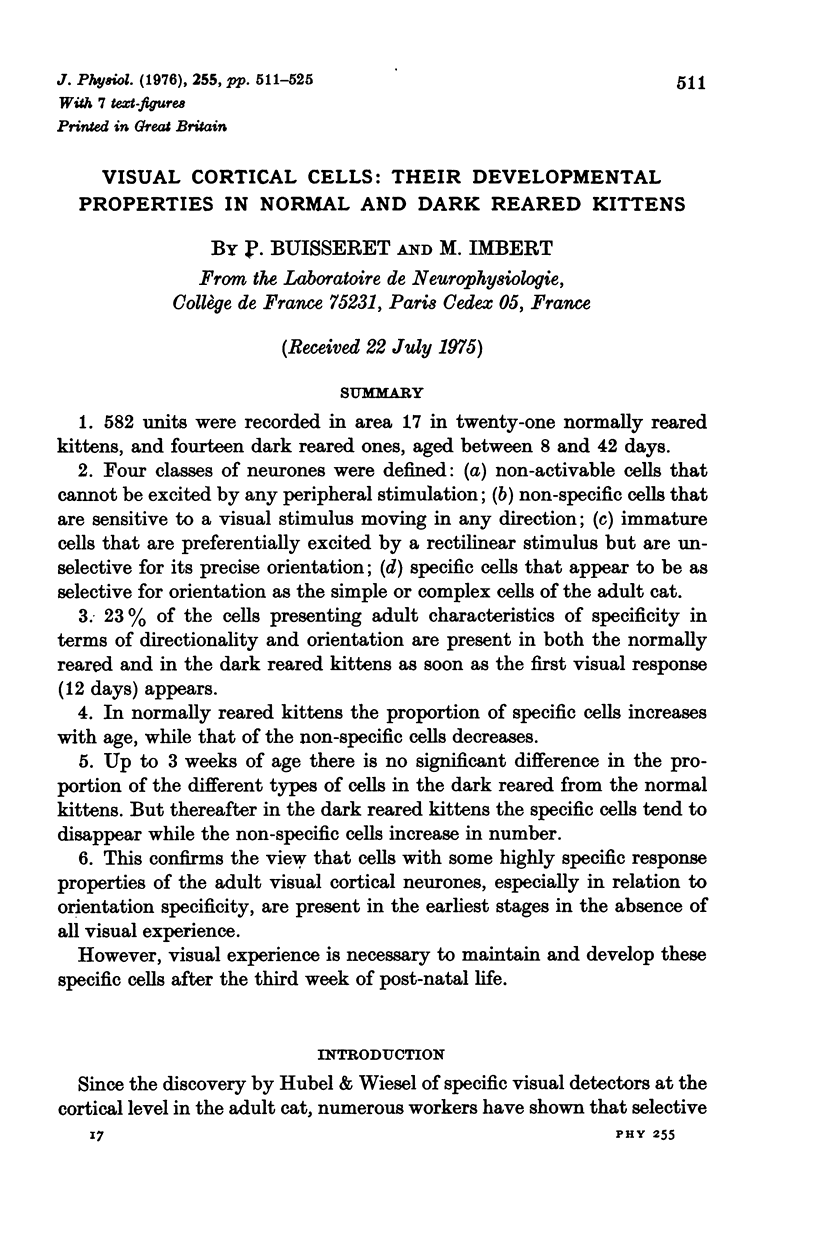
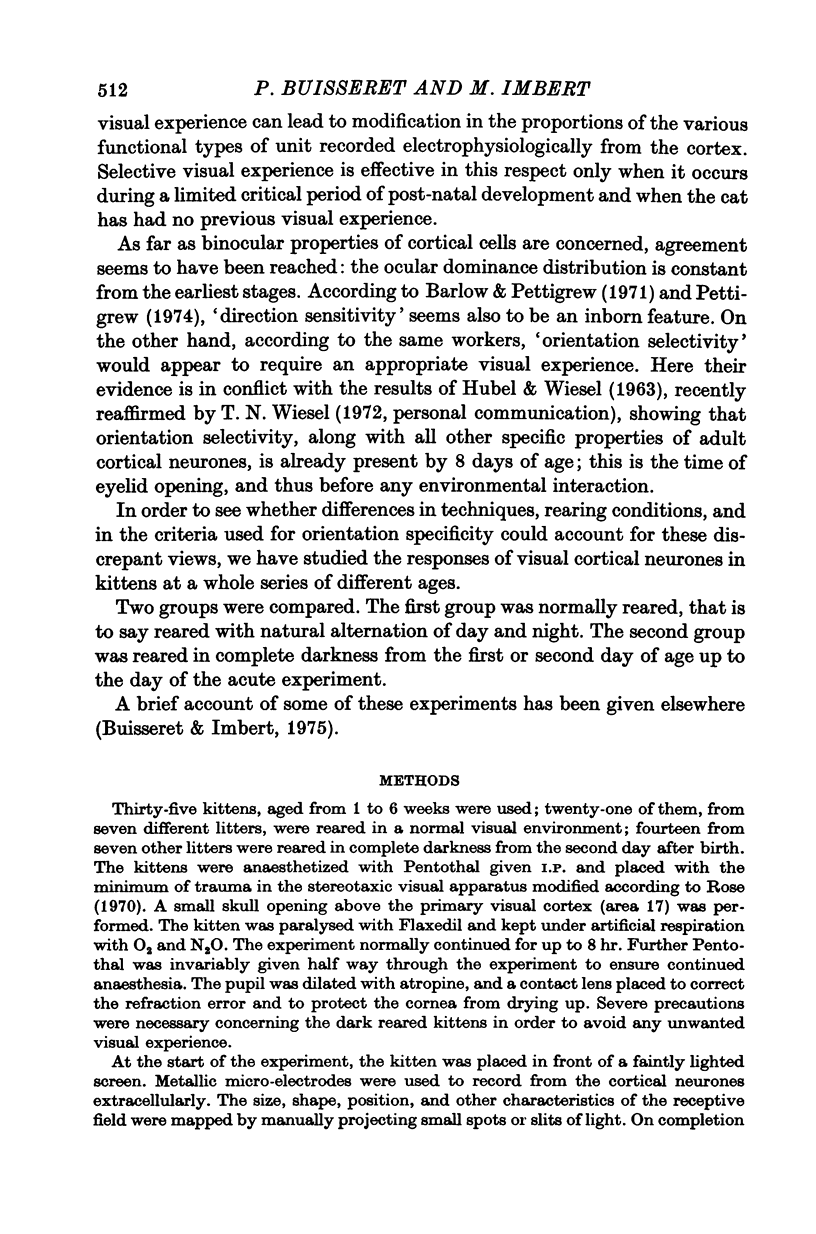
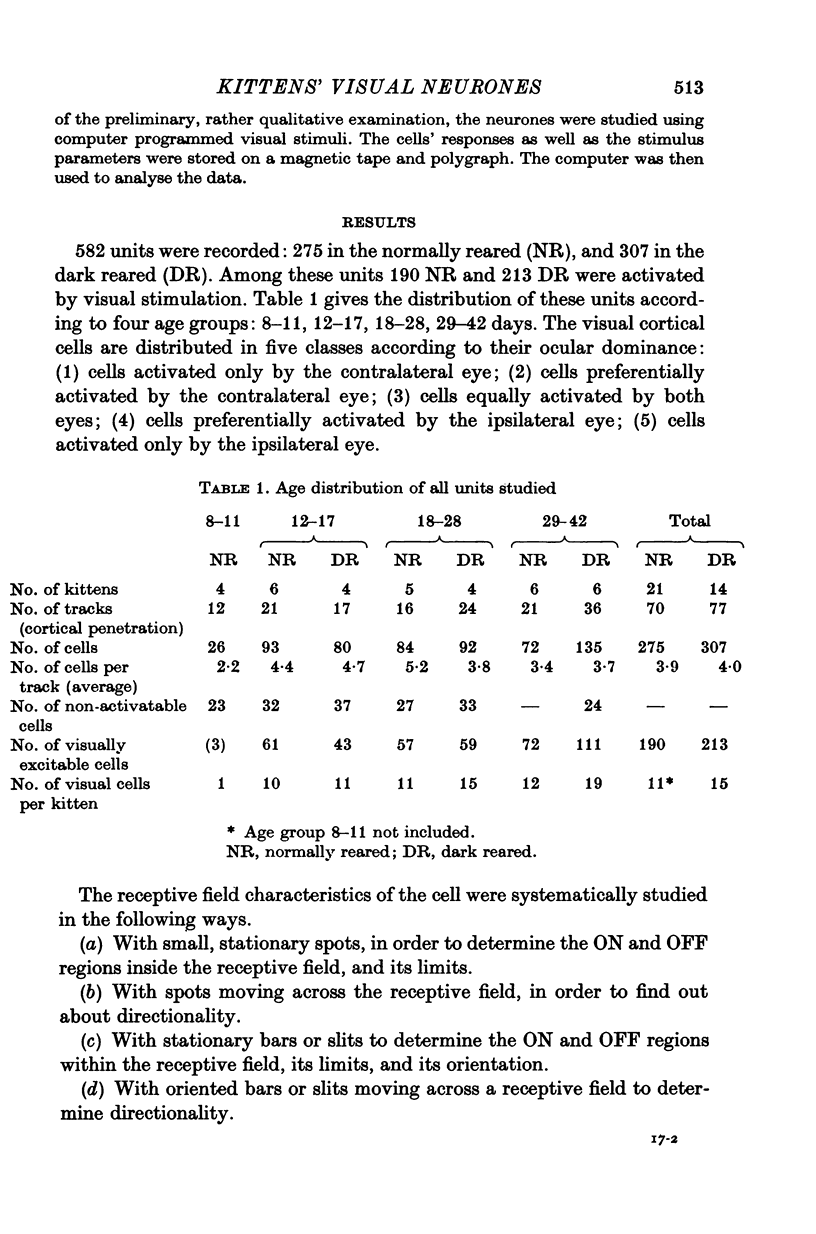
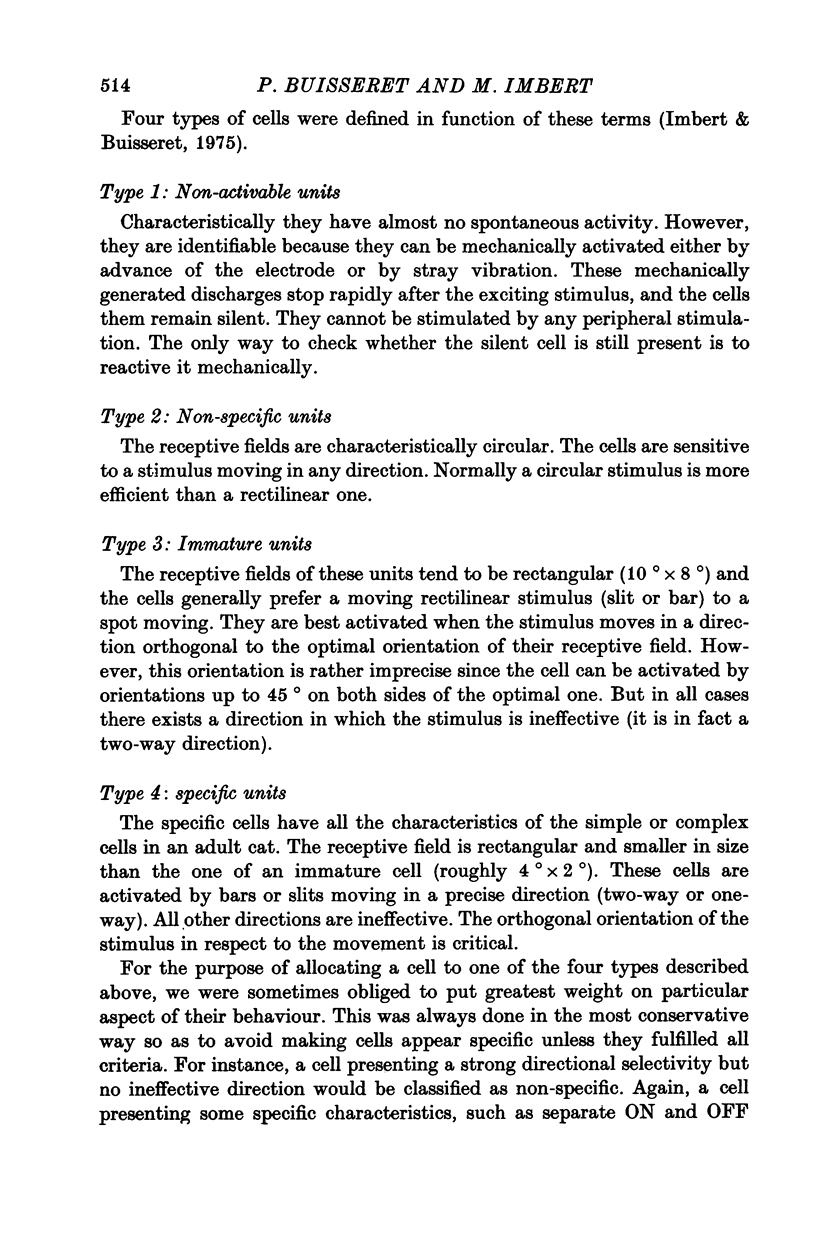
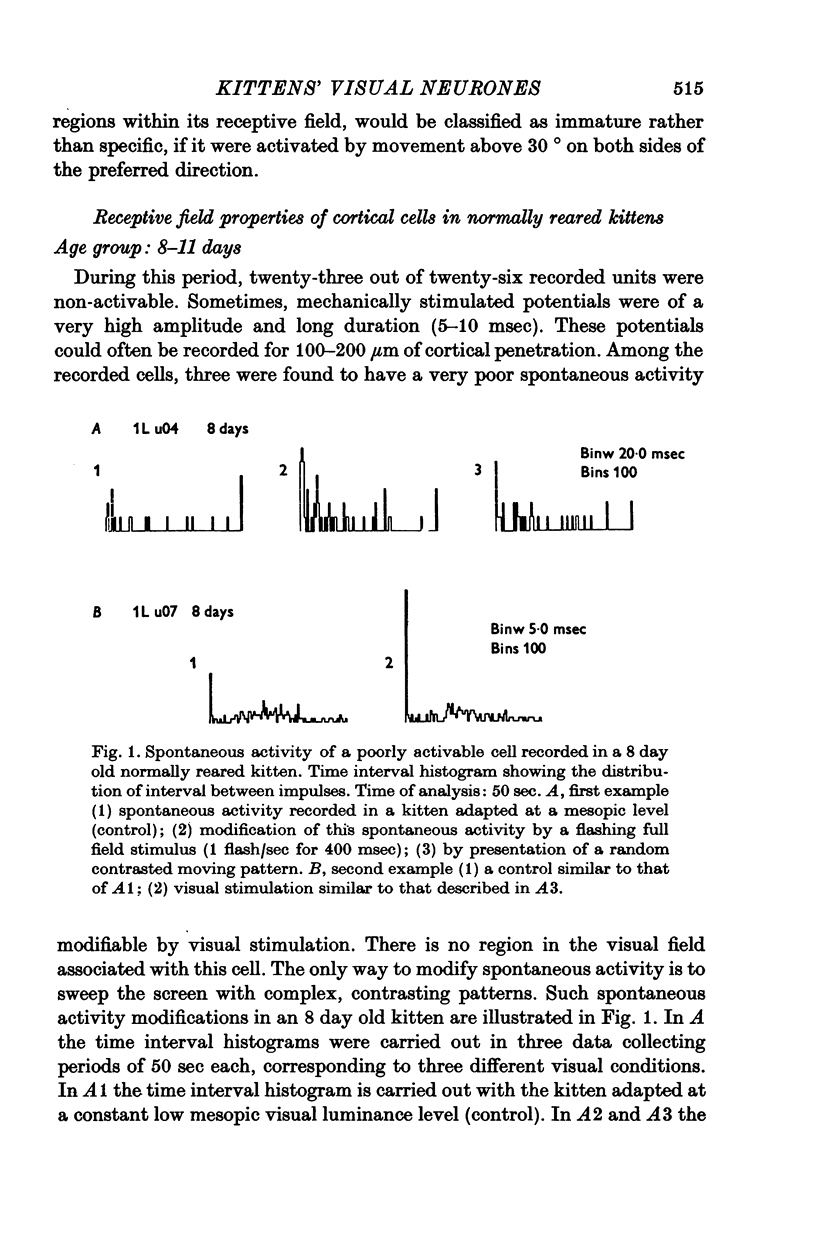
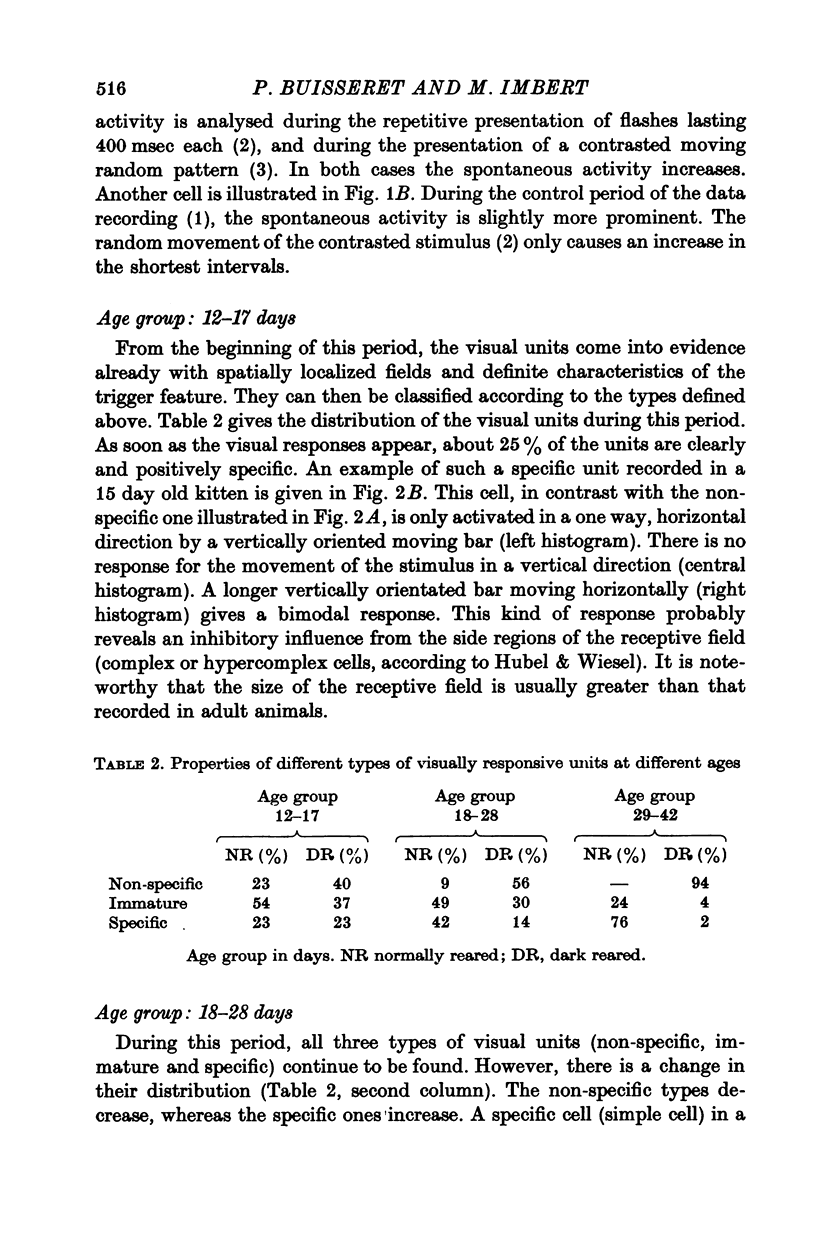
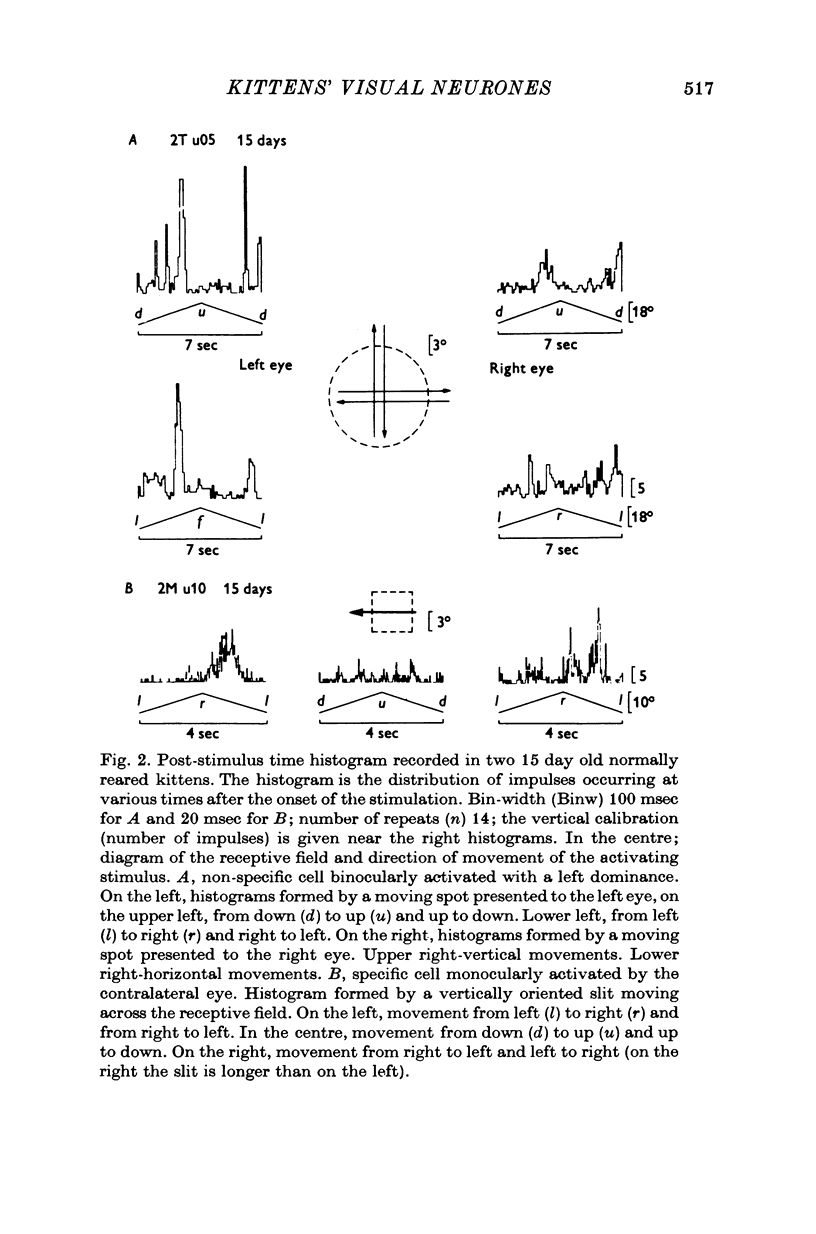
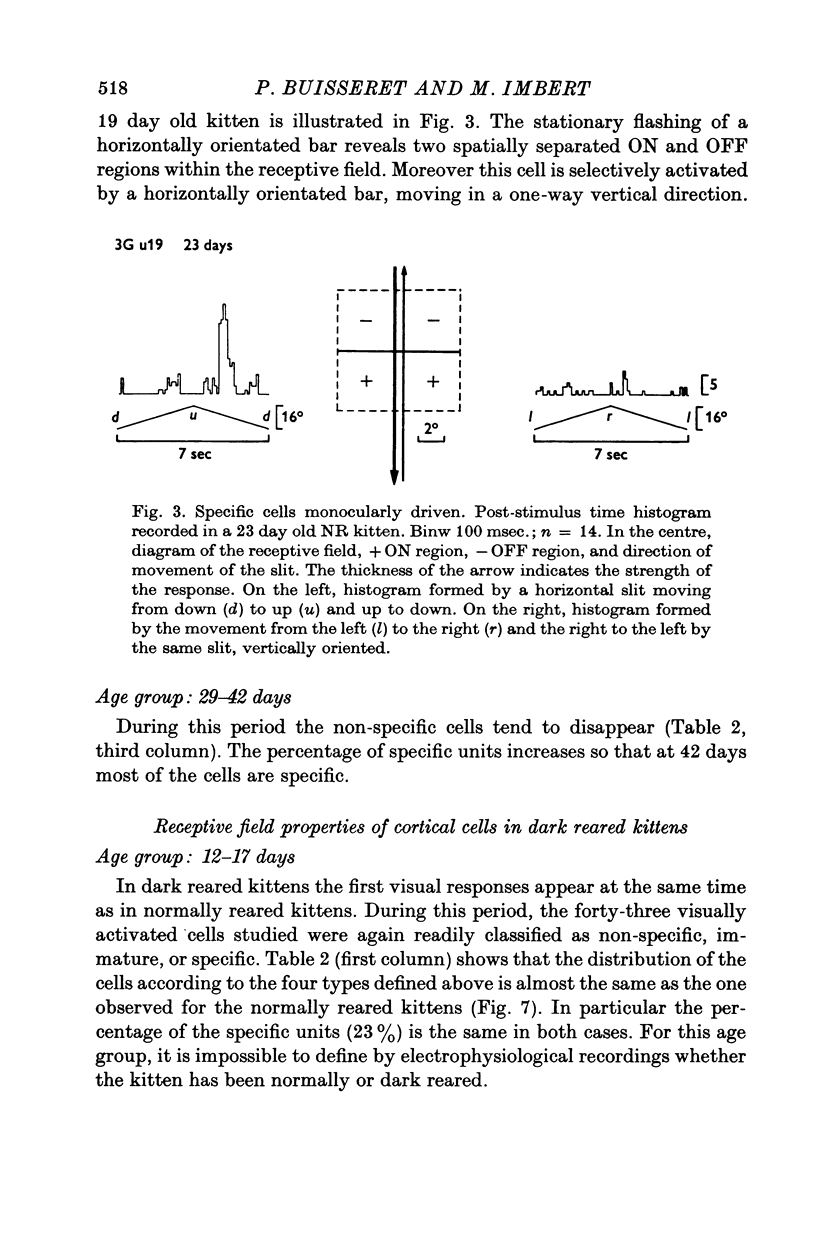
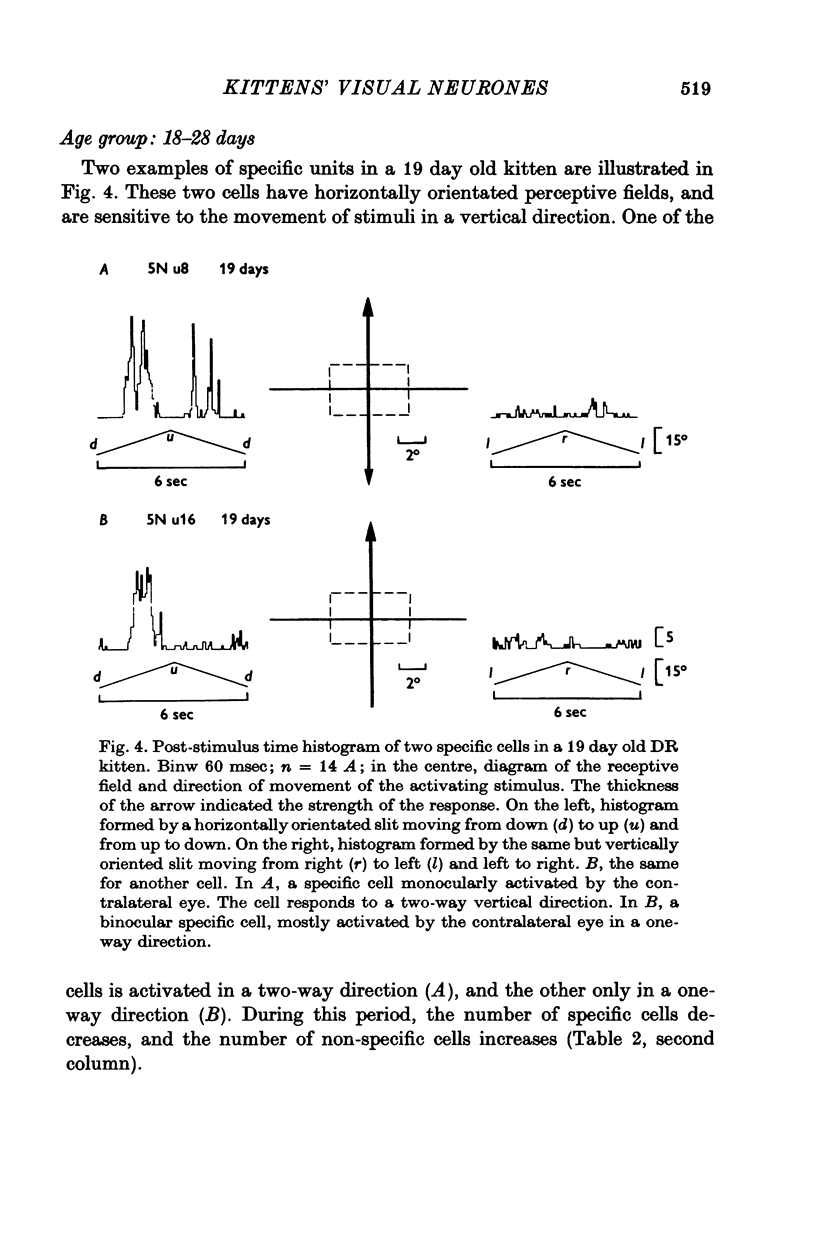
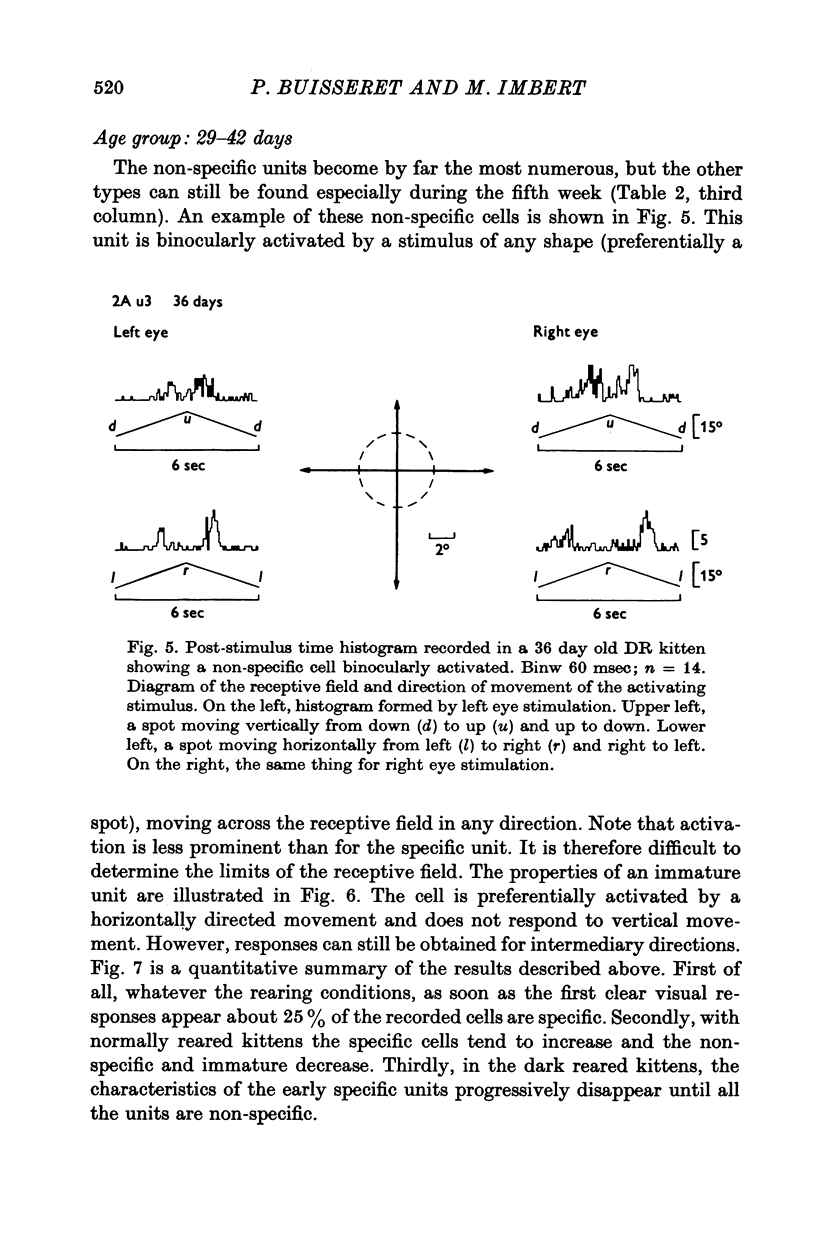
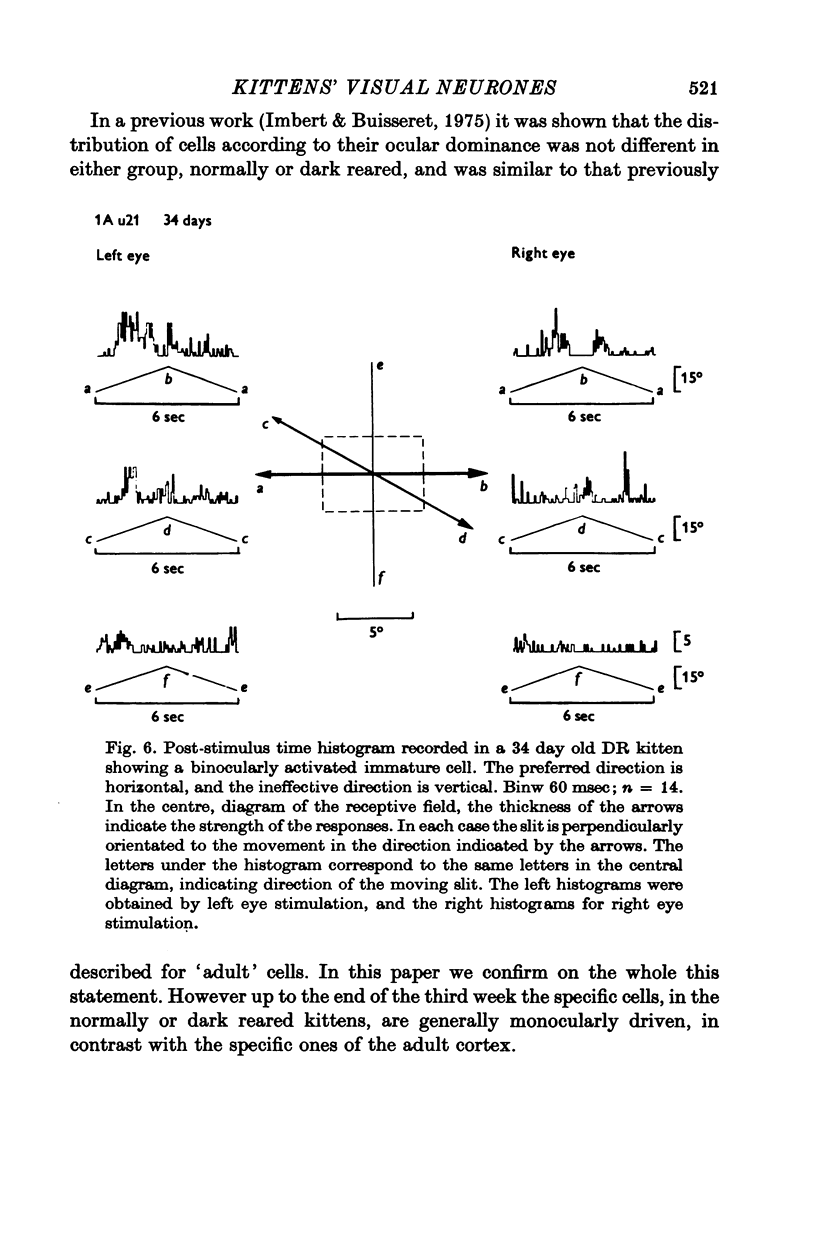
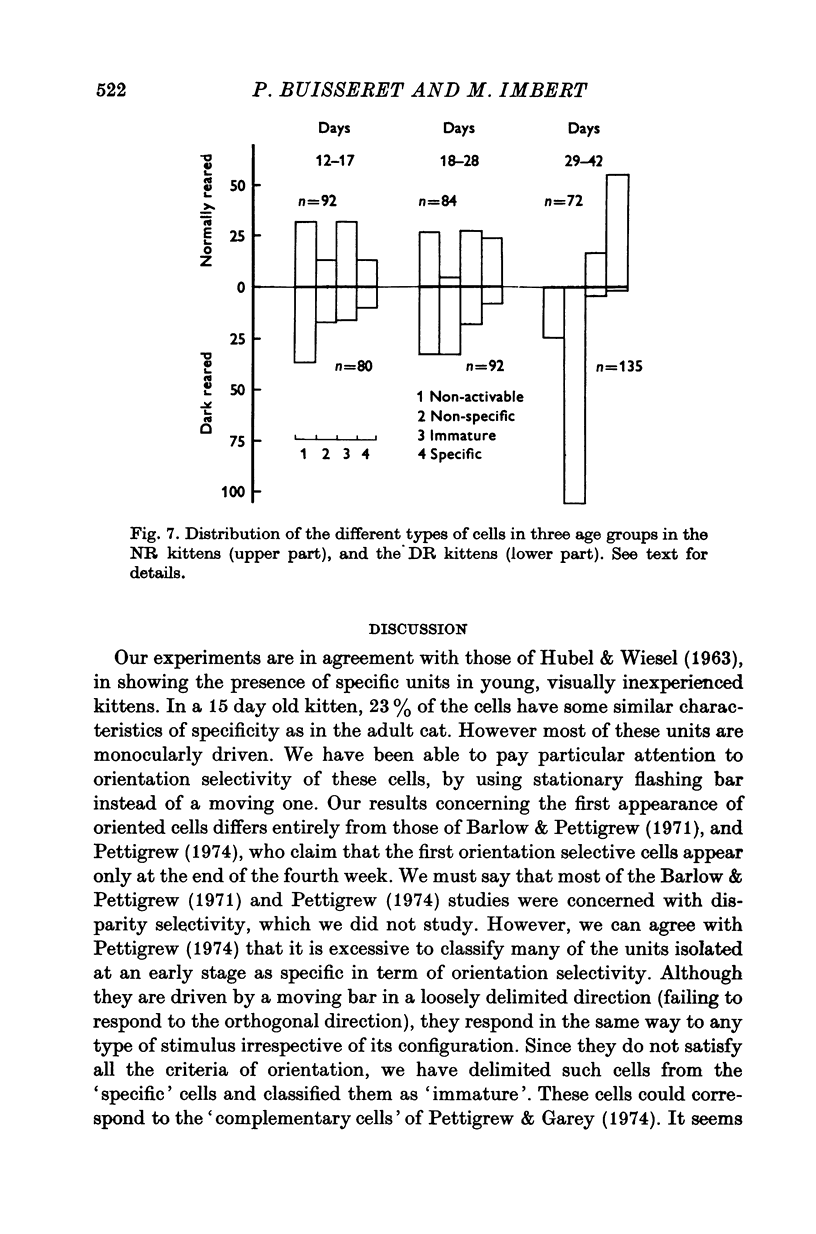
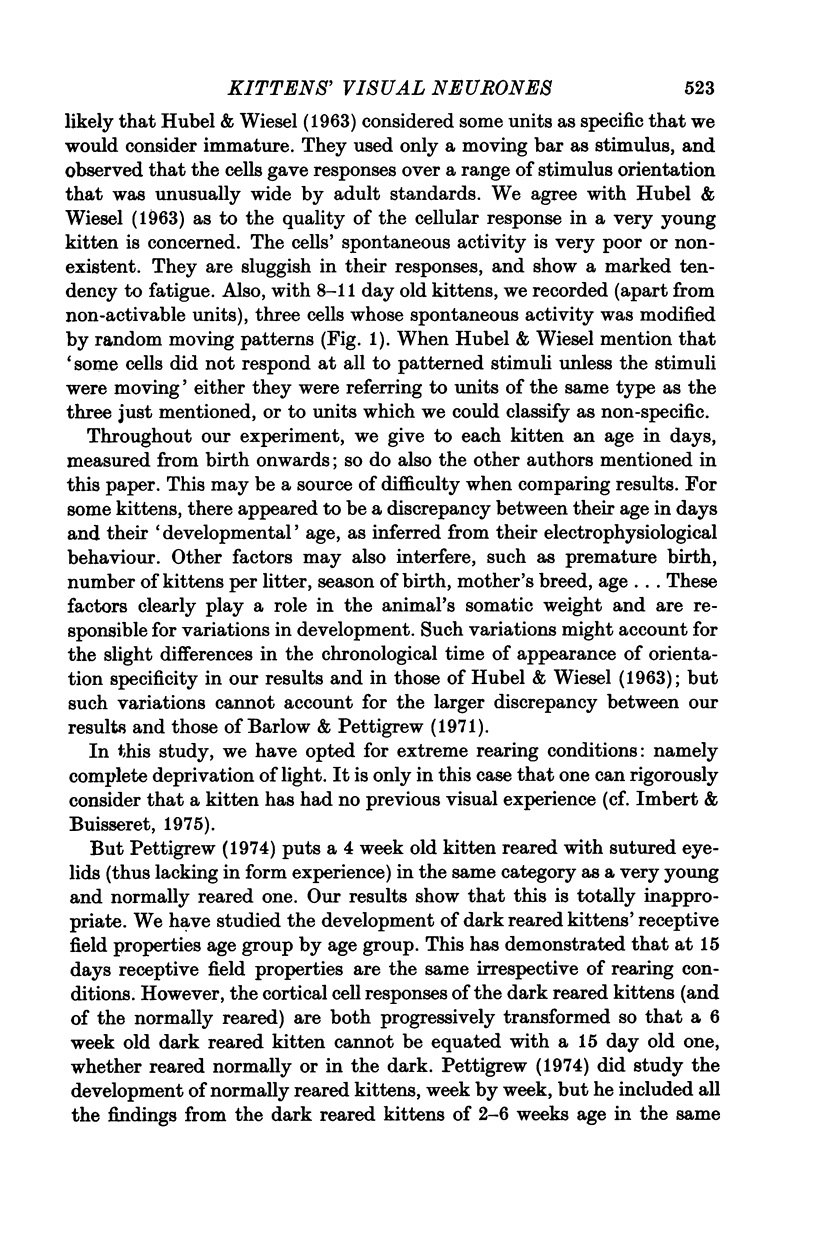
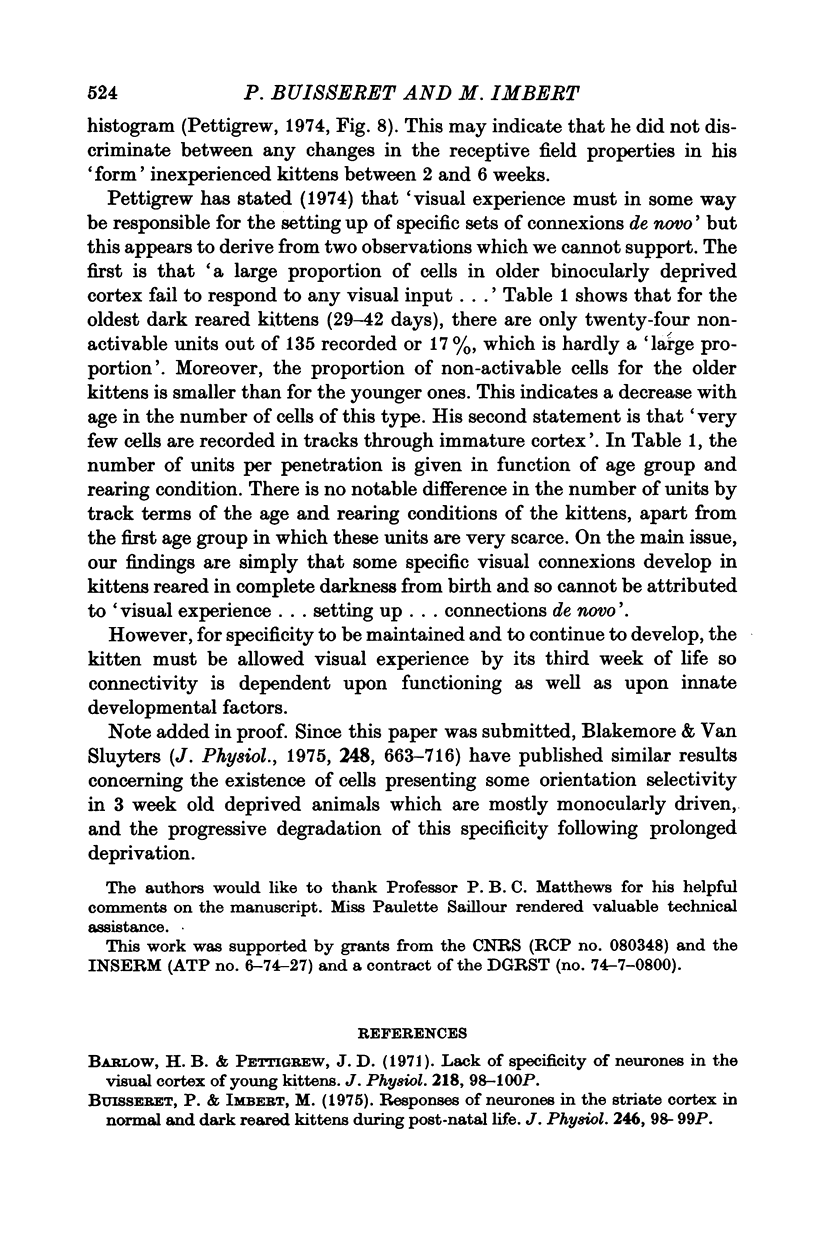
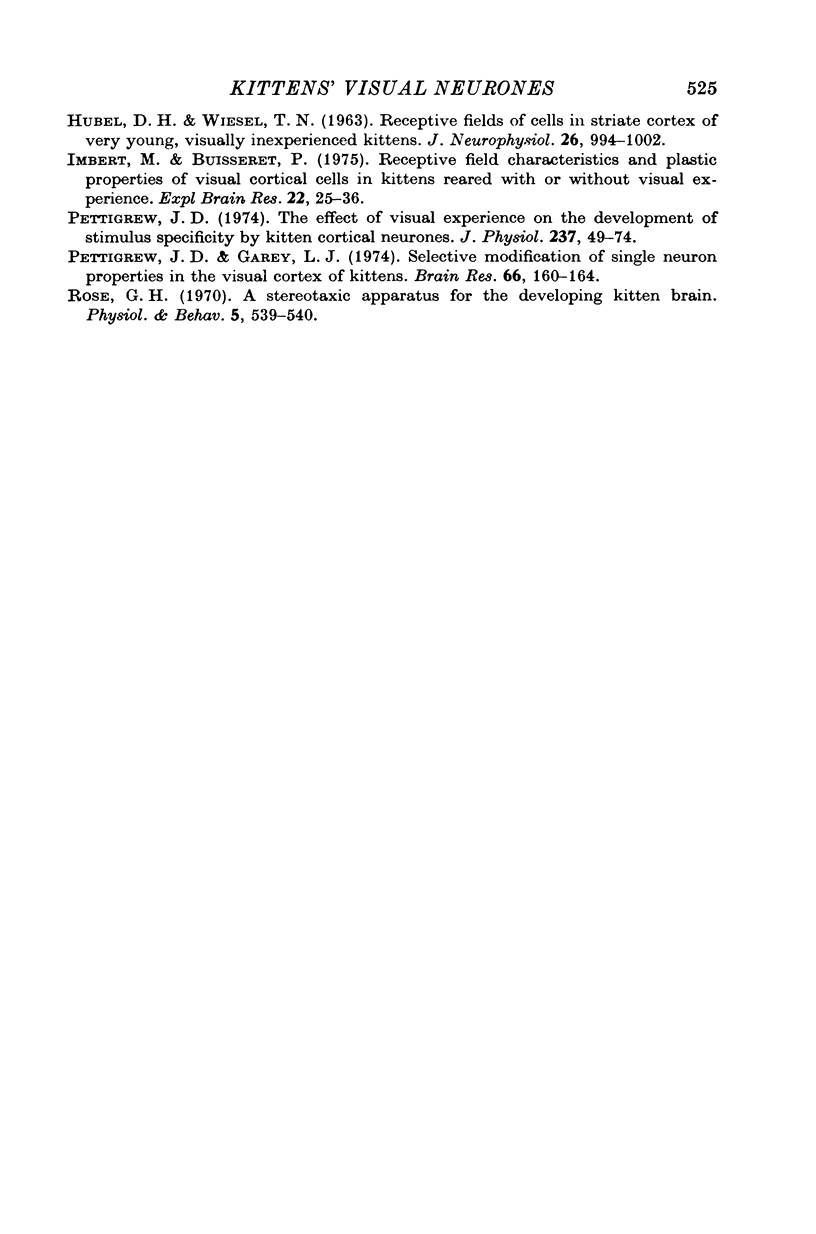
Selected References
These references are in PubMed. This may not be the complete list of references from this article.
- Barlow H. B., Pettigrew J. D. Lack of specificity of neurones in the visual cortex of young kittens. J Physiol. 1971 Oct;218 (Suppl):98P–100P. [PubMed] [Google Scholar]
- Blakemore C., Van Sluyters R. C. Innate and environmental factors in the development of the kitten's visual cortex. J Physiol. 1975 Jul;248(3):663–716. doi: 10.1113/jphysiol.1975.sp010995. [DOI] [PMC free article] [PubMed] [Google Scholar]
- Buisseret P., Imbert M. Responses of neurones in the striate cortex observed in normal and dark-reared kittens during post-natal life. J Physiol. 1975 Mar;246(2):98P–99P. [PubMed] [Google Scholar]
- HUBEL D. H., WIESEL T. N. RECEPTIVE FIELDS OF CELLS IN STRIATE CORTEX OF VERY YOUNG, VISUALLY INEXPERIENCED KITTENS. J Neurophysiol. 1963 Nov;26:994–1002. doi: 10.1152/jn.1963.26.6.994. [DOI] [PubMed] [Google Scholar]
- Imbert M., Buisseret P. Receptive field characteristics and plastic properties of visual cortical cells in kittens reared with or without visual experience. Exp Brain Res. 1975;22(1):25–36. doi: 10.1007/BF00235409. [DOI] [PubMed] [Google Scholar]
- Pettigrew J. D. The effect of visual experience on the development of stimulus specificity by kitten cortical neurones. J Physiol. 1974 Feb;237(1):49–74. doi: 10.1113/jphysiol.1974.sp010469. [DOI] [PMC free article] [PubMed] [Google Scholar]
- Rose G. H. A stereotaxic apparatus for the developing kitten brain. Physiol Behav. 1970 Apr;5(4):539–540. doi: 10.1016/0031-9384(70)90264-7. [DOI] [PubMed] [Google Scholar]


